Marketing Focus – Consumer Behaviour
Company owners and marketing experts need to put themselves into the minds of their consumers and really understand what they are thinking and what is driving them to buy. If we understand their fears, perceptions and pain points, we can target our messaging and design our products and services to fit their needs.
We need to be able to walk in their shoes and connect with how they take their purchasing decisions, to understand the support they need along their buying cycle to get them over the finish line.
We believe understanding your consumer’s behaviour along with your marketing options can save you time and money and make your business more successful. So, take some time to read this article and try and get into the mind of your consumers!
What is a consumer?
A consumer is simply an individual who purchases goods & services available on the market for their personal use (i.e. not for resale). Understanding consumer behaviour is essential to the development of marketing strategies, especially for the consideration of pricing, positioning, segmentation, product design and promotion.
Creating consumer interest and desire for your product/service is one of the main factors to success and is achieved largely by understanding consumer behaviour. Creating a marketing mix to please your target consumers is the goal, as it will positively influence the buyer’s decision making process.
The basics of consumer behaviour
While we’d like to think that customers care about what we’re selling and are listening to what we’re saying, this is not the case. We blank out a huge amount of the stimulus that’s around us, so that we can focus on our core activities and interests, so we’re competing against a lot of noise and really need to stimulate desire and interest to break through.
Here are a few things to think about when you’re designing your marketing:
- Not all promotional material and advertisements will excite the consumer as they do not pay attention to everything they see. The consumer is interested in only what they want to see, this is called selective attention.
- How the consumer perceives the message in your marketing materials and advertisements is called consumer interpretation.
- The consumer remembers only the most relevant and meaningful message, this is called selective retention.
The Purchasing decision
We live in a world where thousands of companies are vying for our attention and competing for our hard-earned money. There are opportunities to purchase everywhere we look and we’re constantly evaluating the options and making purchasing decisions on low-cost items without really being aware of it. But your consumer behaviour is different depending on the type of purchasing decisions you’re making.
High involvement purchases such as a house or car requires complex decision making. This means that the consumer will search for more information and consider other brands and will need time to make an informed decision. You’ll often want human interaction and support, or very detailed information to help you make a decision. These decisions will often be informed by reviews and recommendations from people we trust. As business owners, sales people or marketers, we need to be patient and let our clients take their time and follow their process before they choose our product. Pushing too hard at the wrong point during this process can alienate them and rule you out, so a softer approach is recommended.
For less important or repetitive purchases, little decision making is required and habit or brand loyalty tend to take over.
Then you have impulse buying which requires spur of the moment decisions and not much thought about other brands etc.
Several factors influence the buying decision of a consumer, including psychological, social, personal and cultural. It’s also important to analyse what, where, when and how consumers buy to achieve a better understanding of your targets. Analysing this also helps you achieve more successful sales promotions.
The Buying Cycle
The buying cycle helps marketers and business owners understand when and how they can influence customers to purchase their product. There are five stages all together.
The consumer moves through these from becoming aware of what you’re doing, to the point where they are ready to buy.
- Stage 1: Awareness – The consumer becomes aware of the product/service but lacks information about it.
- Stage 2: Interest – The consumer is stimulated to seek information about the product/service.
- Stage 3: Evaluation – The consumer considers whether to try the product/service.
- Stage 4: Trial – The consumer tries the product/service to improve their estimate of its value.
- Stage 5: Adoption – The consumer decides to make full and regular use of the product/service.
By understanding these stages, we can look at what we need to do as marketers to give our product or service the best chance of being selected.
First, we need to have a sufficient presence to enable our target consumers to be aware of what we’re doing and provide enough information to make them interested. This could be pushing them to a website from a billboard, or a radio ad so they can find out more. Alternatively, it could be more complicated than that, and may require a sales representative, or guides/how-to manuals to allow them to get through their evaluation stage and make an initial purchase.
After this, it’s vital to ensure that the service, support and after-sales is good enough to encourage repeat buying and recommendations. You need to retain and delight your customers and convert these customers into advocates for your brand wherever possible.
Avoiding decision paralysis
Online shopping offers lots of marketing and sales opportunities and optimum convenience for consumers. It gives consumers access to a huge number of products, from competing brands, from wherever they are. This is fantastic, but it can also be overwhelming. The number of options that you have to choose from, and the number of places you can buy them from, can inspire indecision and fear of making the wrong choice. This can lead to abandoning the shopping experience and failing to make a sale.
One way of helping consumers make an informed choice is to offer good customer support and information. Another is to equip your website with filters and reviews to help them buy with confidence. Last, but definitely not least, is building your brand awareness and authority, to make consumers feel that you are the only sensible choice, so they don’t even need to shop around.
Using the scarcity principle to trigger a purchasing decision
There’s a good reason why you see so many sales and short-term promotions used to market a product or service. We are triggered by the sense that something is scarce, or running out, and feel compelled to buy. This sense of urgency can push us through decision paralysis and cause an impulse buy, without having followed our normal buying journey and this is a great tool for boosting sales.
Removing barriers to purchase
It’s our job to make our products or services as attractive to our target market as possible. Good marketing will make sure your product is visible when buyers are looking for it and appealing enough to stand out from the crowd. We also want to make it really easy to buy – removing as many objections and difficulties from the process as possible! If we can do that, we stand the best chance of making a sale.
We hope that this article has helped you to understand your consumers better and know what you need to do to convert a lead into a customer and keep them coming back for more.
If you’re still unsure, we’d be happy to offer a marketing training session or work on your marketing strategy with a complete marketing plan. Get in touch to find out how we can help you.


